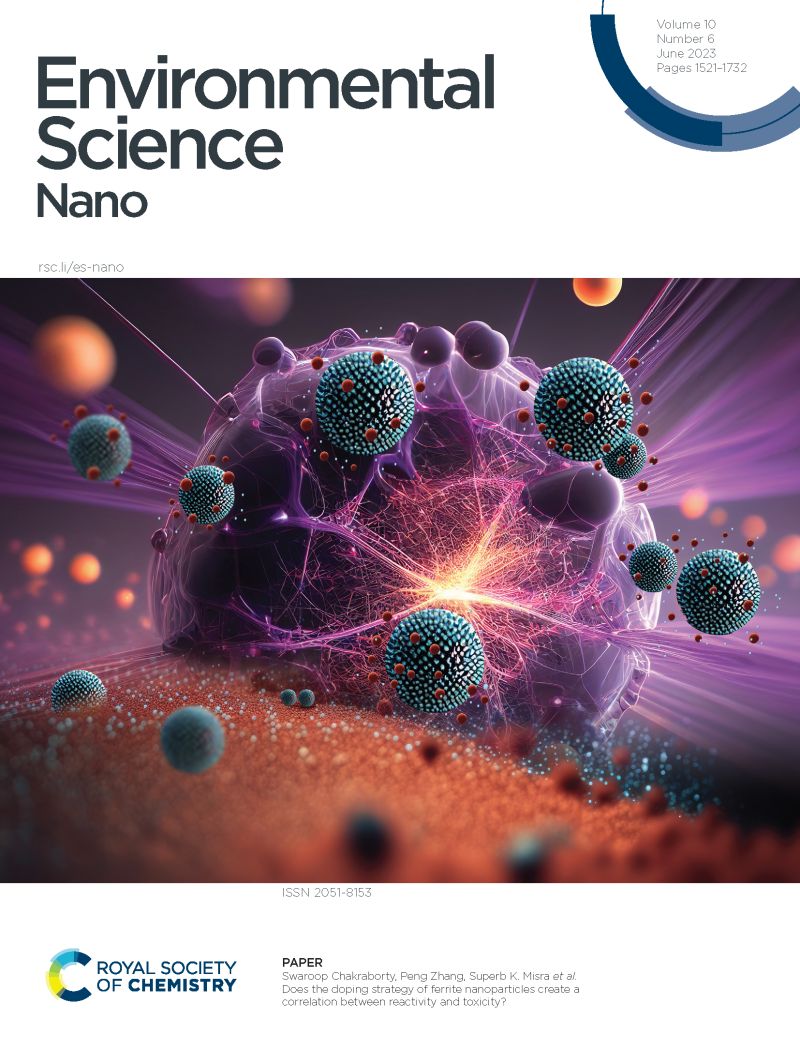四环素和多壁碳纳米管对茼蒿生长及其根系环境的联合影响
IF 5.8
2区 环境科学与生态学
Q1 CHEMISTRY, MULTIDISCIPLINARY
引用次数: 0
摘要
本文章由计算机程序翻译,如有差异,请以英文原文为准。
Combined impacts of tetracycline and multi-walled carbon nanotubes on the growth of Chrysanthemum coronarium L. and its root environment
Multi-walled carbon nanotubes (MW) and tetracycline (TC) usually co-occur in the environment and can threaten plant growth. However, little is known about their combined effect on plant growth. We conducted hydroponic experiments to investigate the uptake, transport, and compartmentalization of TC in Chrysanthemum coronarium L. in the presence of MW, and the combined effects of TC and MW on the root environment were also studied. The results revealed that the presence of MW reduced the concentration of TC in the four subcellular fractions, both in the leaves and roots, compared with TC alone. Co-pollution with TC and MW stimulated the production and accumulation of superoxide anions (O2.-), and hydrogen peroxide (H2O2) in the leaves and roots compared to TC alone, leading to an increase in the malondialdehyde content; this inhibited photosynthesis by reducing the activity of ribulose-1,5-bisphosphate carboxylase and dehydrogenase activity, resulting in a decrease in the dry weight of leaves and roots. The increased O2.- and H2O2 contents induced superoxide dismutase and catalase activities to alleviate oxidative damage. In addition, compared with single TC contamination, the co-application of TC and MW significantly increased the concentrations of oxalic acid and formic acid in root secretions, stimulated the activity of microorganisms, and improved autochthonous input and humification of dissolved organic matter in the growth medium. High-throughput sequencing revealed that Proteobacteria were the dominant bacteria in the medium solution across all groups, followed by Bacteroidetes and Firmicutes. Spearman and redundancy analyses demonstrated that an increase in the relative abundance of beneficial bacteria may stimulate the antioxidant system to defend against exogenous pollution. Our study provides valuable information about the combined toxicological effects of TC and MW on the growth of medicinal plants.
求助全文
通过发布文献求助,成功后即可免费获取论文全文。
去求助
来源期刊

Environmental Science: Nano
CHEMISTRY, MULTIDISCIPLINARY-ENVIRONMENTAL SCIENCES
CiteScore
12.20
自引率
5.50%
发文量
290
审稿时长
2.1 months
期刊介绍:
Environmental Science: Nano serves as a comprehensive and high-impact peer-reviewed source of information on the design and demonstration of engineered nanomaterials for environment-based applications. It also covers the interactions between engineered, natural, and incidental nanomaterials with biological and environmental systems. This scope includes, but is not limited to, the following topic areas:
Novel nanomaterial-based applications for water, air, soil, food, and energy sustainability
Nanomaterial interactions with biological systems and nanotoxicology
Environmental fate, reactivity, and transformations of nanoscale materials
Nanoscale processes in the environment
Sustainable nanotechnology including rational nanomaterial design, life cycle assessment, risk/benefit analysis
 求助内容:
求助内容: 应助结果提醒方式:
应助结果提醒方式:


